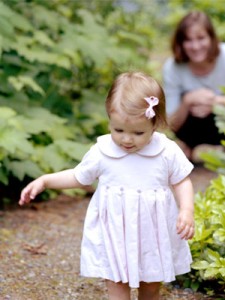As I was pulling out of my driveway this morning, I looked over into the neighbor’s yard. Their little two-year old was right on the edge of a small, sloped retaining wall, about two feet high. The toddler concentrated on that slope, rocking slightly back and forth to gain some momentum, trying to find the perfect foot placement. I held my breath and kept myself from yelling out or running over. He leapt and made it to the driveway safe and sound. No NFL quarterback scoring a touchdown could match the joy in his victory dance. His jubilation was worth the risk of skinning a knee.
Go to any educational workshop or conference these days, and you are bound to hear about grit, the term psychologist and MacArthur Genius Grant recipient Angela Duckworth uses to describe “perseverance and passion for long-term goals.”
March 17th, NPR ran a story on Morning Edition entitled, “Does Teaching Kids to Get ‘Gritty’ Help Them Get Ahead?” It then takes a careful, almost hesitant view of teaching grit. They quote Duckworth as saying, “We don’t know whether we’ve had any effect — the jury’s out.”
Thinking of my toddler neighbor’s victory dance, however, I wonder if we’re asking the wrong question. As anyone who has ever watched a toddler learn to walk or pull away from mom or dad to conquer the stairs themselves, can agree, toddlers have plenty of grit. Perhaps we should be asking not how to teach it, but how it is so often squelched.
Perhaps we find a clue in later in the NPR piece. Tom Hoerr, head of the New City School in St. Louis, says, “It’s really easy to talk about in the abstract…Parents love the notion of grit; they all want their kids to have it. However … no parent wants their kid to cry.”
Now, believe me, I’m not a big fan of making kids cry. However, as a teacher, I have seen parents so invested in protecting their children from any negative feeling, that they end up almost crippling their children out of kindness.
I’ll never forget a phone call I got one day when I was teaching fifth grade in a small religious school south of San Francisco. “Mrs. Kennedy, I just wanted to check with you about this upcoming project. I was thinking we were going to decorate the poster board with a trim with flowers on it. Is that ok, or does it need to match the theme?” I had to remind this mom that she had already graduated fifth grade, and that the project was for her son. She quickly said of course, she understood. But by golly, when that poster board came in, it had a lovely trim around it, one I am sure no self-respecting fifth grade boy would ever have chosen on his own.
Although her use of “we” is funny, the subtext it communicated to her son was not. All her “help” taught him very clearly 1) your ideas are not good enough, 2) you cannot succeed without me, 3) success means never making mistakes, 4) process? What process?
Ironically, when later I told her that I felt the student showed no sense of ownership over his work, she agreed and asked how she could make him take ownership. It was very hard to find a diplomatic way of saying, “Give it back to him.”
Pablo Picasso said, “All children are artists. The problem is how to remain an artist once he grows up.” We may very well say, “All children are gritty. The problem is how to remain gritty when he grows up.”
I know how tempting it is to try to save children from every skinned knee and every hurt feeling. Hey, I almost ran over to “save” my little neighbor, and I’m not even his mom. But if I had protected him from his potential fall, I also would have robbed him of his glorious victory. So, with our new-found respect for grit, perhaps we won’t need to worry so much about instilling it in kids if we think twice about protecting them out of it in the first place. Perhaps what we need to do is give it back to them.
This post originally appeared on SmartBlogs.
copyright Diana Kennedy 2014





[…] I’ve spoken before about the importance of developing (or maintaining) “grittiness,” determination and resilience in children. When I think about my family and the Tactile Dome, I am reminded how often we adults come across opportunities to help our children learn to persevere and overcome. Scared to touch that snake? Worried about walking by a bush with bees? Any given situation may seem trivial, but overtime, we either help them become “gritty” or we miss yet another opportunity. […]
Wonderful and well-written. I love the slant you take. That children need no teaching, or “instilling” of resiliency; that they were born that way! And we must learn not to squash it in a misguided–even if well-intentioned–effort to protect them from any harm. Excellent piece.